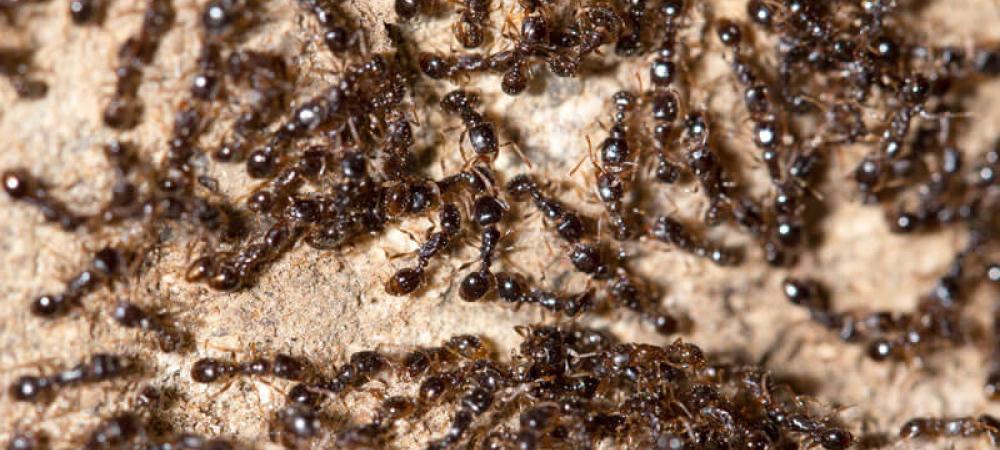Why You’re Seeing More Ants This Summer in North Texas and How to Keep Them Out

Table of Contents
It’s summer in North Texas—which means backyard barbecues, triple-digit heat, and unfortunately, a surge in ant activity. Whether you’re finding trails on the kitchen counter or spotting mounds in the yard, ant problems are more than just an annoyance—they're a sign that conditions around your home are inviting to pests.
We’ll cover why ants are especially active in summer, which species are most common in our area, what attracts them, how they’re getting inside, and most importantly—how to stop the invasion before it gets worse.
Why Ants Are So Active in the Summer
Although ants are a year-round problem, the summer is peak season for ants in North Texas. The heat and dryness drive them to seek out water and food, and our homes offer exactly that.
Key reasons for increased activity:
- Dry weather and intense heat push ants to search for moisture sources—often leading them indoors.
- Colony growth peaks in summer, and with larger colonies come more worker ants actively foraging for food.
- Outdoor food sources like trash, grills, crumbs, or pet bowls make your yard an ideal feeding ground.
- Frequent lawn watering and landscaping can provide the moisture fire ants and other ground-nesting ants need to survive.
Ants are opportunistic and persistent. If they find what they need around your home, they won’t hesitate to move in.
Common North Texas Ants in summer
Here are the most common ant species we see in and around homes during the summer months:
Odorous House Ants
These small brown or black ants are often found in kitchens, bathrooms, or anywhere water is present. When crushed, they emit a strong, rotten coconut-like odor. They’re not dangerous, but they can be tough to eliminate due to their tendency to move nests when threatened.
Fire Ants
Easily recognized by their large mounds and painful stings, fire ants are aggressive defenders of their colonies. They’re a serious concern for families with children or pets and can turn a pleasant backyard into a hazard zone quickly.
Carpenter Ants
Carpenter ants are large, red and black ants don’t eat wood like termites, but they do tunnel through it to build their nests. If you notice them indoors—especially their sawdust-like remains—it could indicate nesting inside walls, which may lead to structural damage over time.
Argentine Ants
Highly adaptable and fast-moving, Argentine ants often form supercolonies with multiple queens. They’re typically found trailing along sidewalks, baseboards, and foundations, and can be tough to manage without targeted treatment.
Rover Ants
Very small, fast-moving ants commonly seen on kitchen counters and trailing along baseboards. Rover ants are attracted to moisture and sugary foods. They nest in mulch beds, wall voids, and under stones—making them difficult to fully remove without targeted treatment.
Acrobat Ants
These ants often nest in trees but can enter homes along roof lines, utility lines, or small gaps. They get their name from the way they raise their abdomens when disturbed.
How Ants Are Getting Inside
Ants don’t need much space to find their way indoors. Once one finds a source of food or water, it leaves a pheromone trail that tells the rest of the colony to follow.
Common entry points include:
- Cracks in the foundation or walls
- Gaps around windows,doors, and roof lines
- Plumbing or utility penetrations
- Vents or attic access points
- Tree limbs or shrubs touching the home
Once inside, ants typically head straight for:
- Sinks and faucets
- Trash cans and recycling bins
- Pet food and water dishes
- Pantries, cabinets, and countertops
Prevention Tips to Keep Ants Out
Ant prevention starts with limiting what draws them in—and closing off how they get inside. While some ants are more stubborn than others, consistent maintenance can go a long way.
Tips to reduce ant activity:
- Wipe down kitchen counters and dining areas regularly
- Sweep or vacuum daily to remove crumbs
- Store all food—including pet food—in sealed containers
- Fix leaky faucets and remove standing water
- Take out the trash frequently and rinse food containers
- Seal cracks and gaps in your home’s exterior
- Trim trees and shrubs away from your house
These steps won’t eliminate colonies on their own, but they will make your home much less appealing to foraging ants.
When It’s Time to Call a Professional
While prevention helps, there are times when professional intervention is necessary—especially when colonies are well established or ants keep coming back despite your best efforts.
Call Myles Pest Services if:
- You’re seeing ant trails in multiple areas of your home
- Fire ant mounds appear near patios, walkways, or play areas
- Ants persist after store-bought treatments
- You suspect carpenter ants may be nesting in walls
- You want long-term protection and peace of mind
Our Comprehensive Approach to Ant Control
At Myles Pest Services, we understand that ant problems don’t exist in a vacuum. Our comprehensive pest control approach doesn’t just treat what you see—it targets what’s happening behind the scenes.
Here’s how we protect your home:
- Thorough inspection to identify the ant species and source of activity
- Targeted treatments that eliminate colonies at the root
- Exterior barrier applications to stop ants before they come inside
- Ongoing service plans to prevent future infestations
- Friendly, expert technicians who know what works in North Texas
Whether you’re seeing odorous house ants in the kitchen, fire ants in the yard, or carpenter ants in the walls, our team builds a treatment plan that fits your specific home, family, and concerns.
Final Thoughts: Don’t Let Ants Ruin Your Summer
Ants may be small, but they can become a big problem fast. With summer temperatures soaring, now is the time to act. Prevention is key—but when ants get persistent, you need a pest control team that’s even more persistent.
Myles Pest Services offers the expert help you need to reclaim your home—and your summer—from ants and other unwanted pests.
Ready to take control? Call us today or book online to schedule your service and enjoy a pest-free home all season long.

